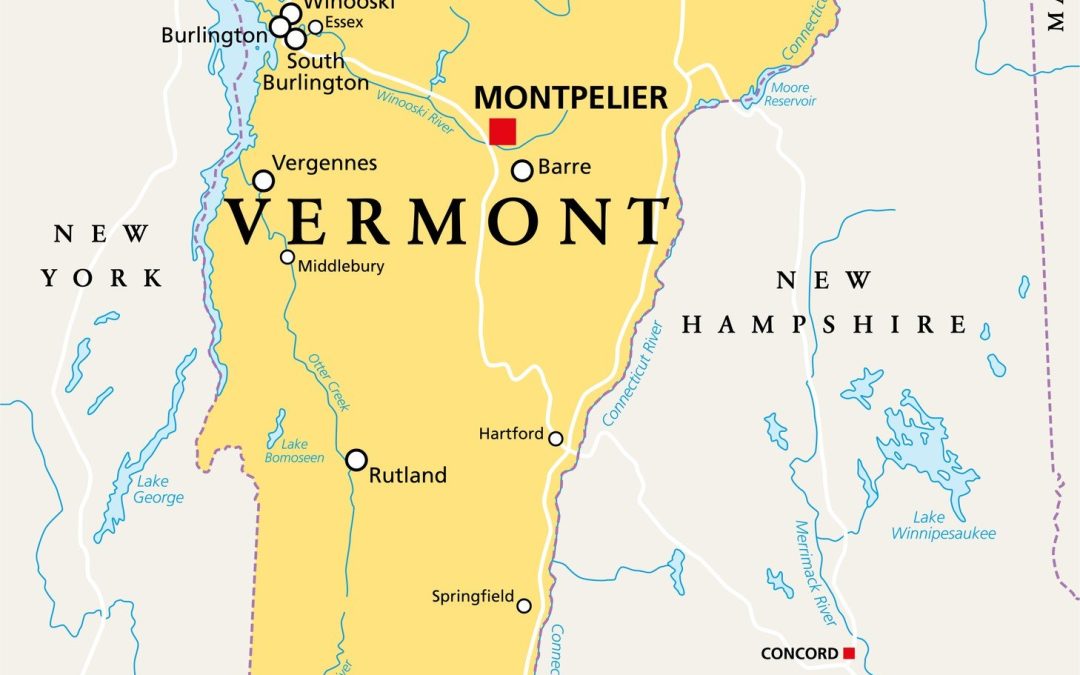Vermont might be among the smallest states in the country, but it also happens to have the most equity-rich homeowners, according to a new report.
At least 86.7% of the New England state’s homeowners fall into this category, according to the 2024 U.S. Home Equity & Underwater Report by real estate analytics company ATTOM. To be equity-rich, it means that the remaining balance on a mortgage is 50% or less than the market value of the home.
In the Vermont county of Chittenden, where the median listing price is $576,600, a staggering 91.7% of homeowners are considered equity-rich.

Other states with the most equity-rich homes include New Hampshire (61.4%), Maine (61.1%), Rhode Island (60.8%), and Montana (60.1%).
Meanwhile, the states with the lowest number of equity-rich homes were Louisiana (22.4%), Alaska (31.5%), North Dakota (32.4%), Maryland (32.6%), and Illinois (33%).
Several cities are also considered equity-rich, many of which can be found in California. At least 68.5% of homes in San Jose—with a median home list price of $1.18 million—are equity-rich. In Los Angeles, where the average home list price is $1.2 million, 64% of homes are equity-rich. In San Diego, where the median list price is $949,950, 63.4% of homes are equity-rich.
Overall, the report found, 47.7% of mortgaged homes in the U.S. are considered equity-rich. That’s a slight decline from earlier in the year when the percentage of equity-rich homes peaked at 49.2%. But the good news: Overall, 41 states saw an increase in home equity between Q4 2023 and Q4 2024.
“Nearly half of all residential mortgage payers in the U.S. have paid off at least half of their loans, leaving many with six-figure levels of wealth available to leverage anything from new home purchases to starting new businesses to paying off major expenses,” said ATTOM CEO Rob Barber in a statement.
Why being equity-rich matters
Equity-rich homeowners have a particular advantage because they can leverage the ratio of mortgage to the market value of their homes, allowing them to trade up to more expensive properties or take advantage of a home equity line of credit, or HELOC.
Many would-be homeowners with equity-rich homes have stayed out of the market, though, as interest rates continue to bump up to near 7%, and because more expensive homes don’t necessarily equate to bigger or better homes. Since 2019, the median home list price has increased by 38.4% while the average price per square foot of a home has increased 54.9%.
Around 50% of homeowners have an interest rate below 4% and are loath to trade it in for the current 6.8% rate, contributing to a “lock-in” effect, where homeowners are constrained by such “golden handcuffs.”
That might be why so many homeowners have instead opted for HELOCs. According to a report from the Federal Reserve Bank of New York, the balances on HELOCs have increased 20% since 2021.
Homeowners with equity-rich homes can also use that equity to consolidate debt by taking out a home equity loan against their property. A recent report from real estate analytics company CoreLogic found that the amount of home equity lending increased to its highest levels since 2008.
According to Selma Hepp, the chief economist of CoreLogic, the amount of home equity has increased by $129,000 since the onset of the COVID-19 pandemic, to $315,000.
That has served as a “financial buffer,” helping homeowners avoid defaulting on their mortgages, she said in a statement.
“Mortgage delinquency rates have remained at historical lows despite the inflationary pressures and higher costs of almost all non-mortgage, homeownership-related expenses,” she said.
Some homeowners are using their extra equity to refinance or negotiate a lower monthly payment or interest rate (for homeowners who bought when interest rates were high).
Despite current relatively high interest rates, some homeowners are eager enough to move that they’re willing to take on a higher interest rate burden.
“Even in today’s high-price, high-rate market, homebuying activity around big life events—like kids, marriage, and divorce—keeps the market in motion,” Realtor.com senior economic research analyst Hannah Jones previously said.

